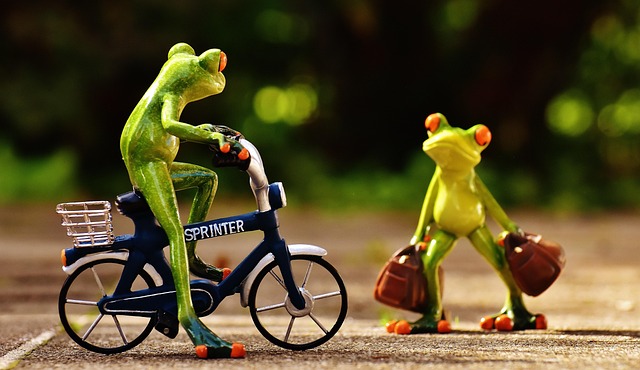The phrase “ways of seeing” has long served as a gateway to the interplay between perception and knowledge. In contemporary discourse, it bridges the empirical rigor of science with the reflective depth of modern philosophy. By exploring how different methodologies shape our understanding of reality, we can chart a map that both clarifies and complicates the narrative of human cognition. This article traces the evolution of ways of seeing from the empiricist roots of the Enlightenment to the post‑structural debates that question the very possibility of objective observation.
1. Historical Foundations: From Empiricism to Rationalism
The debate over ways of seeing dates back to the 17th‑century split between empiricists, who prized sensory experience, and rationalists, who upheld reason as the primary guide. John Locke’s notion of ideas as impressions from the senses set the stage for a scientific view that knowledge emerges through observation. In contrast, René Descartes emphasized innate ideas and deductive reasoning, suggesting that certain truths could be grasped without external data. The tension between these perspectives foreshadowed later scientific revolutions, where the “way of seeing” shifted from philosophical speculation to experimental measurement.
2. The Scientific Revolution and the Rise of Empirical Methods
With the emergence of the scientific method, ways of seeing became increasingly quantifiable. Galileo’s telescopic observations proved that the heavens were not immutable and that the Earth was not the universe’s center. Newton’s laws codified a mathematical framework that turned the cosmos into a set of predictable equations. These advances demonstrated that a disciplined, systematic way of seeing—through instruments, controlled experiments, and mathematical models—could yield universal truths. Yet even as science gained authority, philosophers noted that instruments mediated perception, raising questions about the authenticity of what was “seen.”
Key Concepts in Scientific Observation
Several core ideas underpin modern ways of seeing within science:
- Instrumental mediation: Tools shape the data we collect, implying that what we see is not directly the world but an interpretation.
- Operational definitions: Phenomena are defined by the procedures that measure them, anchoring reality in reproducible actions.
- Reductionism: Complex systems are broken down into simpler components for analysis, suggesting that understanding parts yields knowledge of wholes.
These principles illustrate how scientific ways of seeing convert subjective perception into objective, testable claims.
3. Modern Philosophy’s Response to Scientific Ways of Seeing
Philosophers in the 20th century grappled with the implications of scientific ways of seeing. Karl Popper argued that falsifiability distinguishes science from metaphysics, thereby reinforcing the importance of empirical scrutiny. Thomas Kuhn’s paradigm theory highlighted that what scientists accept as valid changes over time, suggesting that ways of seeing are historically contingent. In the realm of epistemology, philosophers such as Edmund Gettier questioned whether justified true belief suffices for knowledge, thereby challenging the assumption that scientific observation inevitably yields certainty.
Philosophical Critiques of Empirical Observation
“Science, when unburdened by metaphysics, is a set of instruments that allow us to see the world. But those instruments themselves are part of the world we observe.” – Anonymous
Critiques often point to the following issues:
- The observer effect—measurement can alter the phenomenon.
- The theory-ladenness of observation—our expectations color what we perceive.
- The incompleteness of models—no theory captures every detail of reality.
These observations urge a cautious interpretation of ways of seeing, reminding us that every act of observation is both a revelation and a construction.
4. Ways of Seeing in Contemporary Scientific Practice
Today, the boundaries between science and philosophy blur further as interdisciplinary research becomes the norm. Quantum mechanics introduces a probabilistic element to ways of seeing, where the act of measurement collapses a wave function into a definite state. Neuroscience, meanwhile, explores how the brain constructs visual reality, revealing that perception is not a passive reception but an active inference. In both cases, the philosophical questions about the nature of reality and observation remain central, suggesting that ways of seeing are a shared endeavor across disciplines.
Interdisciplinary Methodologies
Emerging fields such as cognitive science and bioinformatics employ ways of seeing that integrate statistical inference, computational modeling, and human introspection. This synthesis illustrates that:
- Data interpretation often relies on prior theoretical frameworks.
- Technological advances open new sensory modalities, like imaging or sensor arrays.
- Ethical considerations shape what and how we observe.
Thus, the modern scientific worldview acknowledges that ways of seeing are both tools and lenses that can be refined, questioned, and expanded.
5. Aesthetic Dimensions: Seeing Beyond the Scientific Lens
While science emphasizes measurement and predictability, modern philosophy also considers the aesthetic aspects of ways of seeing. The visual arts, for instance, employ techniques that alter light, perspective, and color to convey meaning. Philosophers like Immanuel Kant explored how the mind imposes structures onto sensory data, suggesting that the way we see is never neutral. In this sense, aesthetic experience demonstrates that ways of seeing can be shaped by cultural norms, emotional states, and creative intent, challenging the notion that observation is purely objective.
Philosophical Aesthetics and Scientific Observation
Bridging the two realms involves recognizing that:
- Perception is mediated by both neural processes and cultural expectations.
- The same data can be interpreted through diverse conceptual lenses.
- Aesthetic judgments often rely on patterns that science seeks to formalize.
Consequently, ways of seeing become a negotiation between empirical evidence and interpretive frameworks, enriching both scientific inquiry and philosophical insight.
6. The Future of Ways of Seeing: Emerging Technologies and Ethical Questions
Looking ahead, technologies such as augmented reality, machine learning, and deep‑learning neural networks promise to transform how we perceive and analyze data. As these tools become more sophisticated, the boundary between human observation and algorithmic interpretation will blur. Philosophers must grapple with new questions: Who is the observer when an AI system generates a visual output? How do we attribute authenticity to observations produced by non‑human agents? And what ethical responsibilities accompany the power to reshape perception?
Emerging Ethical Considerations
- Transparency: Understanding the algorithms that process and present data.
- Bias: Recognizing how training data and model architecture influence results.
- Accountability: Determining responsibility for misinterpretations or misrepresentations.
These concerns illustrate that ways of seeing are not merely technical problems but also moral challenges that demand philosophical engagement.
Conclusion: An Ongoing Dialogue
The interplay between science and modern philosophy has continually reshaped our understanding of ways of seeing. From early empiricists to contemporary data scientists, each generation redefines what it means to observe and to know. By remaining attentive to both the empirical rigor and the reflective depth that these fields offer, we can foster a more nuanced and responsible approach to perception. In the end, ways of seeing are not static doctrines but dynamic practices that evolve with our instruments, theories, and ethical commitments. This ongoing dialogue ensures that our quest to see the world—whether through a microscope, a quantum detector, or the human mind—continues to be as rich and complex as the reality it seeks to capture.




